- Home
- Deborah Harkness
The All Souls Real-Time Reading Companion Page 3
The All Souls Real-Time Reading Companion Read online
Page 3
https://www.youtube.com/watch?v=ZduDvIBu3EU
5-6 December, Chapter 11:
The air felt full, tingling with an almost electrical current. I half expected to hear a rumble of thunder, the atmosphere was so thick. Peter Knox had been mentally invasive, and Satu had inflicted great pain at La Pierre, but this witch was different and somehow more dangerous.
‘The Wizard’ by Bat for Lashes.
http://www.youtube.com/watch?v=X5BNBrnDXwE
8 December, Chapter 12:
He silenced me with another kiss, while he lifted the heavy chain from my shoulders. We broke off momentarily so Matthew could get it over my head. Then his hands breached the crenelated line of pickadils where sleeves met bodice. His fingers slid among the gaps, searching out a weak point in the garment’s defenses.
This is the model I used for Diana’s wedding dress, from a portrait by Lavinia Fontana of an anonymous ‘Lady of the Court’ from c.1590. As you can see, I stuck very close to the image right down to the pickadils. It is actually surprisingly difficult to find portraits of women from around 1590 – or at least to accurately date portraits from that period – as women’s fashion was in a major upheaval. This is very French in style – and much simpler than what was being worn in England at a similar moment. In a few weeks, when you see English and then Czech fashion you will be amazed that these gowns were all worn at approximately the same time given their striking differences.
It is additionally challenging to find women’s clothes that I could actually see Diana wearing without too much difficulty or complaint. Matthew might have struggled to get Diana out of this gown but at least I could imagine her agreeing to put it on.
17 December or Saturnalia, Chapter 13:
The clock shuddered to a stop in its splintered wooden case.
‘Skata.’ Philippe looked sadly at his ruined clock.
‘Monsieur Finé, God rest his soul, would not be pleased with your improvements to his design.’ Matthew waved the smoke from his eyes as he bent to take a closer look. ‘Every year Philippe tries something new: jets of water, chiming bells, a mechanical owl to hoot the hours. He’s been tinkering with it ever since King François lost it to him in a card game.’
This is Oronce Fine’s (1494-1555) lost clepsydra or water clock, an ancient method of keeping time, which he gave to King François I of France and which has since disappeared: http://catalogue.drouot.com/ref-drouot/lot-ventes-aux-encheres-drouot.jsp?id=1493384
Oronce Fine.
25 December, Chapter 15:
‘It looks like a demented hedgehog,’ I observed. The London skyline was filled with needlelike spires that stuck up from the huddle of buildings that surrounded them.
Detail from a London panorama, Visscher, 1616, showing St Paul’s Cathedral in the center, Baynard’s castle on the river to its left, and the Blackfriars to the left of Baynard’s castle.
26 December, Chapter 16:
Matthew shared his memories of the city during the course of the afternoon as the tide rose and fell. He told me about the time in the fifteenth century when the Thames froze for more than three months – so long that temporary shops were built on the ice to cater to the foot traffic.
Though the river Thames in London is a tidal estuary, it does sometimes freeze over. During the Early Modern period, Europe experienced widespread climate change. Known at times as the ‘Little Ice Age’, this drop in temperatures led to many challenges as arable land decreased and harvests were poor. But challenges could sometimes provide opportunity. When the river froze, it drove London’s busy watermen out of business as they could not ply their oars – or their trade – by shuttling passengers from the playhouses of Southwark to the city. Instead, people walked across the river. And in a city that was full of trade regulations, this led to the establishment of a free market zone of shops, dramatic entertainments, temporary pubs and eating establishments – you name it. These moments of hard freeze were called ‘Frost Fairs’, and sometimes artists preserved them on canvas, as in the freeze of 1683/4 (pictured on left below). The incident Matthew refers to was in 1410, when the Thames froze for fourteen weeks.
28 December, Chapter 16:
My forehead creased. Why had Matthew given me a prayer book?
‘Turn the page,’ he urged, his hands heavy and quiet against the small of my back.
On the reverse was a woodcut of Queen Elizabeth kneeling in prayer. Skeletons, biblical figures, and classical virtues decorated each page. The book was a combination of text and imagery, just like the alchemical treatises I studied.
Image from the prayer book known as ‘Queen Elizabeth’s Prayer Book’, first printed in 1569 and reissued many times during the queen’s long reign. It is often referred to as a ‘Protestant Book of Hours’ because of its lavish illustrations. More information about the book can also be seen here: http://www.lambethpalacelibrary.org/content/elizabethprayerbook.
29 December, Chapter 16:
When Matthew turned us toward the city, I looked up. There was St. Paul’s.
‘I’m not likely to get lost with that in the neighborhood,’ I murmured. As we made our slow progress toward the cathedral, my senses grew accustomed to the chaos and it was possible to pick out individual sounds, smells, and sights. Bread baking. Coal fires. Wood smoke. Fermentation. Freshly washed garbage, courtesy of yesterday’s rains. Wet wool.
Of all the things I’ve enjoyed most about writing the All Souls trilogy was a chance to bring late sixteenth-century London – the London I spent more than fifteen years researching as a scholar – to life for my readers. I know a lot about the city during the reign of Elizabeth. Not everything, but a lot. Some of it made its way into my history books and articles, but not all of it.
My challenge in Shadow of Night was to paint a portrait of the city that was as round and real and three-dimensional as possible. It was all the more important to me because the Elizabethan city is barely perceptible in modern London. Much of what Diana and Matthew would have known was destroyed by fire in 1666 or by bombs in World War II.
I did what I could to reconstruct it with words, and hoped your imaginations would fill in the rest.
29 December, Chapter 16:
Her feet twinkled in the firelight, the silver embroidery on her richly colored slippers picking up hints of red, orange, and gold.
A woman’s shoe from the sixteenth century, showing insects (a spider), at the Metropolitan Museum of Art, NYC: http://www.metmuseum.org/collection/the-collection-online/search/111277, as well as this example of Elizabethan embroidery showing natural elements, will help you imagine Mary Sidney’s shoes. The embroidered skirt is a detail from a portrait of Elizabeth I painted by Nicholas Hilliard c. 1599.
29 December, Chapter 16:
Matthew nodded and directed my attention down the street. ‘And that is Baynard’s Castle.’ It was the largest building I had seen yet except for the Tower, St Paul’s, and the distant prospect of Westminster Abbey. Three crenellated towers faced the river, linked by walls that were easily twice the height of any of the nearby houses.
Baynard’s Castle
30 December, Chapter 17:
‘Or you could see Nicholas Vallin,’ Jacqueline suggested. ‘He is expert with metals, Mistress Roydon, and also makes fine clocks.’
Like many of the Elizabethan figures in the book, Nicholas Vallin was a real craftsman. He was a French protestant who fled his native country for religious reasons and took up residence in the Blackfriars. This carillon clock, made by Vallin in 1598, is one of the earliest musical clocks in existence. When you listen to it, just think, you are listening to something that people were listening to more than four hundred years ago . . .
Listen to it here: https://www.youtube.com/watch?v=Ao2DXVK7mH8
31 December, Chapter 18:
‘Have you seen Mary’s laboratory!’ I exchanged the shapeless gray coat for my cloak before sending Joan away to tend to her other dutie
s. ‘She’s taken over one of the castle’s towers and painted the walls with images of the philosopher’s stone. It’s like working inside a Ripley scroll! I’ve seen the Beinecke’s copy at Yale, but it’s only twenty feet long.’
These are photographs I took of Yale’s Ripley Scroll—the very same one Diana describes here. It is hard to picture them all at once, in a continuous forty-foot high mural, but that’s the great thing about fiction. You can imagine what an impact they would make. The images in the Ripley scroll present an allegorical representation of the making of the philosopher’s stone. The study of chemical imagery like this is Diana’s research speciality.
Ripley scrolls are very rare – only around two dozen survive – and are infrequently displayed because of their fragility. Sometimes (as with the Yale example) the scrolls were cut in sections to keep them from being damaged by unrolling/rolling them.
Image of Sol, Ripley Scroll, Beinecke Library Mellon MS 41, Yale University
‘You must make water of y’erthe, and erthe of y’eyere, and eyere of ye fyere and fyere of y’erthe.’ Alchemical allegory, Ripley Scroll, Beinecke Library MS Mellon 41, Yale University
Step in the making of the philosopher’s stone, Ripley Scroll, Beinecke Library MS Mellon 41, Yale University
Image of the red elixir, Ripley Scroll, Beinecke Library Ms Mellon 41, Yale University
12 January, Chapter 19:
The area surrounding St. James’s Church was far more prosperous than the Blackfriars, with spacious well-kept streets, large houses, busy shops, and a tidy churchyard.
The parish of St James Garlickhythe, where Susanna Norman, Goody Alsop, and the rest of the Garlickhythe gathering lived, was a prosperous area in the Elizabethan city of London. You can explore all of Early Modern London at the wonderful site dedicated to the Map of Early Modern London at the University of Victoria, https://mapoflondon.uvic.ca/;
18 January, Chapter 22:
A silver tree grew from a small seed in the bottom of the flask. Branches had sprouted from the trunk, forking out and filling the top of the vessel with glittering strands. Tiny beads at the ends of the branches suggested fruit, as though the tree were ripe and ready for harvesting.
‘The arbor Dianae,’ Mary said proudly.
Alchemists produced effects in their experiments that caused great wonder, like the arbor Dianae. Today, we know it as a dendritic amalgam of crystallized silver – but in the sixteenth century it was seen as a mystical revelation about the creative, generative properties hidden in the natural world. This image captures modern attempts to replicate the alchemical process that Mary Sidney performed in her London laboratory.
21 January, Chapter 23:
A transparent creature with the reptilian head of a dragon hovered in the air, bright wings striking the rafters and sending the ghosts scuttling for cover. It had only two legs, and the curved talons on its feet looked as deadly as the points along its long tail.
‘How many legs does it have?’ Marjorie called, unable to see clearly from her position. ‘Is it just a dragon?’ Just a dragon? ‘It’s a firedrake,’ Catherine said in wonder.
The inspiration for Diana’s familiar, Corra, taken from seventeenth-century engravings and watercolors.
22 January, Chapter 23:
My thoughts drifted while Mary worked. The day was sunny, and a beam of light sliced through the smoky air and fell on the mural depicting the alchemical dragon. I sat forward in my chair.
‘No,’ I said. ‘It can’t be.’
But it was. The dragon was not a dragon, for it had only two legs. It was a firedrake and carried its barbed tail in its mouth, like the ouroboros on the de Clermont banner. The firedrake’s head was tilted to the sky, and it held a crescent moon in its jaws. A multipointed star rose above it. Matthew’s emblem.
Detail from the Ripley Scroll, images of which decorate the walls of Mary Sidney’s laboratory.
26 January, Chapter 24:
Whether for propriety’s sake or to avoid his disorderly brood, Dr Dee was strolling in his brick-walled garden as if it were high summer and not the end of January. He was wearing the black robes of a scholar, and a tight-fitting hood covered his head and extended down his neck, topped with a flat cap. A long white beard jutted from his chin, and his arms were clasped behind his back as he made his slow progress around the barren garden.
Portrait of John Dee from the Ashmolean Museum collection. The description above was based on research into Dee’s house at Mortlake, this portrait, and the interviews Elias Ashmole conducted in Mortlake in the seventeenth century after Dee’s death where he interviewed villagers about Dee’s appearance and behavior.
28 January, Chapter 25:
‘I believe that your husband and his friends call me the Old Fox. I am also, for my sins, the lord high treasurer.’ The shrewdest man in England, and certainly one of the most ruthless, allowed his words to sink in. His kindly expression did nothing to diminish the sharpness of his gaze.
William Cecil was sitting in my parlor.
Portrait of William Cecil, c. 1590, from the workshop of Marcus Gheeraerdts. William Cecil was Elizabeth’s most-trusted minister and advisor.
30 January, Chapter 25:
‘And silver and black are the queen’s colors. That’s why Walter is always wearing them,’ Mary explained, smoothing the puffed sleeves.
But my favorite garment by far was the white satin petticoat that would be visible at the front of the divided skirts. It was embroidered, too, with mainly flora and fauna, accompanied by bits of classical architecture, scientific instruments, and female personifications of the arts and sciences.
My inspiration for Diana’s petticoat was a real late-sixteenth/early seventeenth-century petticoat panel now in the collections of the Victoria and Albert Museum: http://collections.vam.ac.uk/item/O85436/petticoat-panel-unknown/. The dress Diana wore over it to meet the queen was based on this portrait, c. 1589 (Elizabeth Brydges, maid of honour to Elizabeth I). The petticoat panel would have been the dramatic front portion that showed between the separated skirts (they are drawn together here, but you can see the silvery trim where the opening was).
30 January, Chapter 25:
My first glimpse of Richmond Palace was the top of a creamy stone tower, the royal standard snapping in the breeze. More towers soon appeared, sparkling in the crisp winter air like those of a castle out of a fairy story.
Only a few traces remain of this once-famous palace built in 1501 by Henry VII on the banks of the Thames to the west of the city of London. At the time of Diana’s visit to Elizabeth’s court, it would have looked like the images below.
30 January, Chapter 25:
The most lavishly dressed, heavily scented, and thickly painted creatures in the room turned slightly to study us. Their movement revealed Elizabeth, the queen bee seated at the center of the hive. My heart skipped a beat. Here was a legend brought to life.
As Elizabeth aged, her portraits grew more stylized, fantastic, and iconic. As a result, it can be hard to imagine what the queen really looked like. Artists didn’t want to paint an unflattering picture. In 1590 Elizabeth would have been fifty-seven – and I imagine this is as realistic a likeness as we are likely to have.
A portrait of Queen Elizabeth I painted sometime between 1585 and 1590 by an unknown artist, possibly Marcus Gheeraerdts, owned by Helmingham Hall, Stowmwarket, Suffolk.
1 February, Chapter 26:
Rad. It was a confusing rune, one that stood for both an arrival and a departure, a journey’s beginning and its ending, a first meeting as well as a long-awaited reunion. Gallowglass’s hand closed around the bit of wood. This time, its meaning was clear.
‘You travel safely, too, Auntie Diana. And bring that uncle of mine with you’ Gallowglass said to the sea and the sky . . .
Runes were a Germanic alphabet used widely throughout the Norse world of Northern Europe and into the Anglo-Saxon period in the British Isles. Rad (Anglo-Saxon) is the same rune as Ra
ido (proto-Germanic).
Inscribed runestone (twelfth century) is the ‘Vaksala Runestone’ near Uppsala, Sweden.
Diana and Matthew are now on their way to Prague which means Gallowglass gets the last word for about five weeks. To send us off into our journey, here is what I think of as ‘Gallowglass’s Theme’, ‘The Gael/Promontory’ by Circa Paleo.
http://www.youtube.com/watch?v=kxG7XiHnyPg
11 March, Chapter 27:
After we’d lived out of saddlebags and a single shared trunk for weeks, our belongings had arrived three days after we did at the tall, narrow house perched on the steep avenue leading to Prague Castle known as Sporrengasse. Our German neighbors presumably dubbed it Spur Street because that was the only way you could persuade a horse to make the climb.
This is the house in Prague, in the Mala Strana district, on a steep street leading to the castle, that was the inspiration for Diana and Matthew’s house.

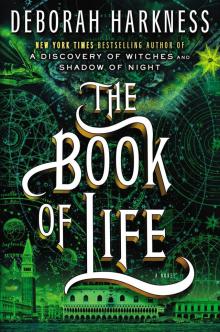 The Book of Life
The Book of Life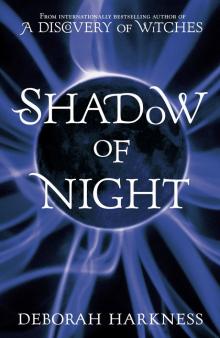 Shadow of Night
Shadow of Night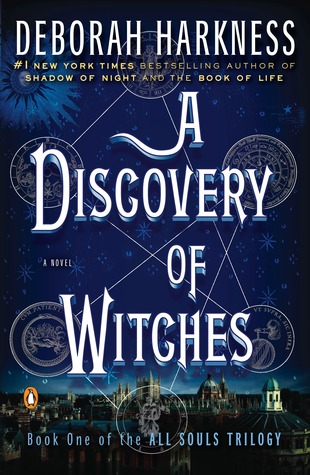 A Discovery of Witches
A Discovery of Witches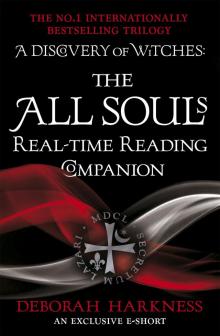 The All Souls Real-Time Reading Companion
The All Souls Real-Time Reading Companion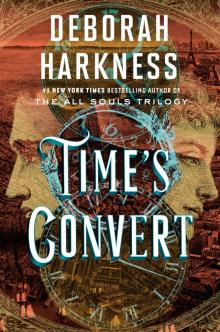 Time's Convert
Time's Convert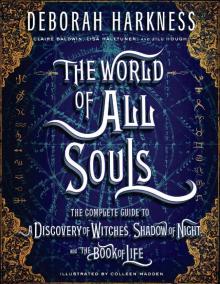 The World of All Souls
The World of All Souls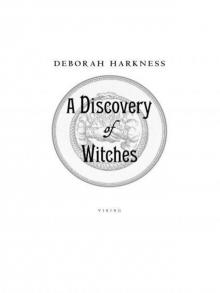 A Discovery of Witches: A Novel (All Souls Trilogy)
A Discovery of Witches: A Novel (All Souls Trilogy) Shadow of Night: A Novel
Shadow of Night: A Novel